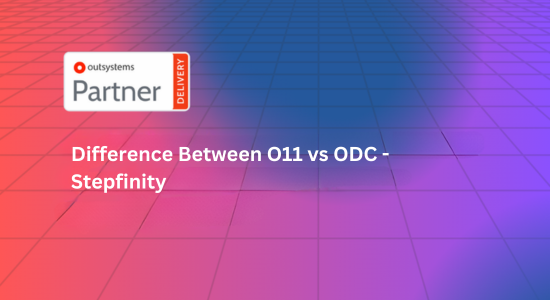Debt, the word sounds scary right? Every wise individual wanted to be debt-free as long as they can but what if there are some debt you can’t see until they are sky-rocketed and you are buried under its.
There are some debts whose are invisible but cost you more than just your money. It can cost you speed of your applications and time of your staff.
These debt are called technical debts, which occurs mainly occurs in development and IT enterprises, when enterprise makes hurried decision and didn’t looked at every aspect of their decision and impacts.
Well to make you understand the what is technical debt other thing you can be debt free and doesn’t small but essential parts in your development process.
What is Technical Debt
Before I tell you how you can avoid technical debts, it is important for you to understand what is technical debt.
Technical debt can be defined as the consequence of choosing quick and cheap quality of solution or technology while development which can lead to inefficiency, increased maintenance cost and reduce productivity.
In simple words, technical debt is the outcome of choosing low quality or outdated technology without thinking about its future effect, this can happen because of lack of awareness, ignorance, budget limitation or time constraints.
If the cause if limited budget or time constraints then the developer should take the measured risk and should be determined to resolve the technical debt issue before it affect respective software or application.
In words of Mike Duensing, CTO and EVP Engineering at [Skuid](https://www.skuid.com/ “(opens in a new window)”) who explains technical in his own words. “Conceptually, technical debt is similar to financial debt. For the borrower, it is more important to purchase an item and have it in hand now than it is to save up the funds to purchase in all-cash.”
Just like financial debts, we need to make the pay the technical debts too, so the developer should be aware of debt they are carrying so they can settle them out easily.
What are it’s Reasons
As a software developers I can understand that there are certain situations which sometimes forces a developer to borrow technical debt and its fine, until the developer comes back to resolve it. Below are the list of some intentional and unintentional acts which can cause technical debt.
Deadline Constraint
Many a times developers are under the pressure of completing their task within the given time limit which can affect the quality of code as well as developers can overlook the code efficiency for the time being, which when left untreated can be a cause of technical debt.
Unoptimized Code
Inexperience coder when writes a code, they are mostly inefficient but that how freshers learns. Problems aren’t code written by a inexperienced developer but the code is not cross-checked by an experience developer to make sure the code is optimized enough and working on it fullest efficient. So relaying completely on the fresher’s code can also lead to technical debt which they can cause unintentionally.
Unclear Project Requirements
If the client is not clear about its requirements and makes modification in its demands every now and then, then it can lead to code inefficiency.
Lets understand it with the help of an example, lets suppose you are working on a project which was meant to track available and open routes of a city and suddenly the client changes the requirement to tracking a particular object in the street and where they are going then there are either developers revisit the code and makes changes on the places which is not practiced normally or they can overwrite the functions of the code with new one, which can make it hard to understand and optimize the code.
Temporary Solutions
There are times when a developer face a roadblock in their tasks and in the process of solving the road block, they oversee the best practices and code optimization which they decided to optimize in future but that time never comes and due to inefficient code the tech debt accumulates.
Inefficient Testing
After development one of the most important work is the work of tester. Either its a white box testing or black testing, a testers needs to be cruel while testing the code to ensure the quality of product. If testing is done inefficiently then unoptimized code can be also be deployed which can cause tech debt during run time which can be very hard to handle.
Types of Technical Debt
After understanding the reasons behind technical debt, it is also important for you to understand what are the types of technical debt and under which type your debt is falling so you knows the consequences of your technical debt.
Code Debt
This type of technical debt occurs when developer writes an inefficient code due to ignorance or lack of experience or when the code is not checked and optimized from time to time to make sure its optimized and up-to-date.
Design Debt
Design debt occurs when development is started without designing the project properly which can cause inefficient and outdated software architecture or design. With lack of design there are chances of following overly complex designs or poor use of pattern and lack of modularity. Design debt can cause difficulty in scaling the software and adding new features as the software isn’t structured accurately.
Documentation Debt
Documentation Debt is the debt when the software’s document is outdated or aren’t updated from time to time. If the documentation is for internal purpose then it can cause the delay in understanding the system and relation behind every part of the code. Due to this the development can hamper of both new as well as old developers.
Testing Debt
Testing is debt is the type of debt which occurs when the software is not testing significantly on every level, unit testing or integration testing. Lack of proper testing can cause risk of bugs filled and defected code in production which can cause customer dissatisfaction and some times system failure.
Infrastructure Debt
This is one of the most severe and most concerning technical debt, in this debt the platform or environment developers are using to build the software, such as outdated servers, unoptimized deployment practices and lack of backup plans for future mis-happenings. Infrastructure debts not cause performance issues it can also increase downtime drastically.
Technical Debt
Technical debt normally occurs when there is a team of unexperienced developers who lacks certain skills and unknown to optimal solutions because of which they can opt for inefficient solutions which can increase problems in future. Investing in training and development of employee can reduce the chances of technical debt.
Dependency Debt
In this type of debt, your software is depends on outdated or unsupported third-party libraries, framework or tool which doesn’t work properly now. This debt can lack the security of your data due to some open threads because of outdated and easily accessible tools. To avoid this kind of debt, developers should update there dependencies to make sure everything is working properly.
Process Debt
This debt occurs when the process of development is not optimized, for example while creating a software a firm is using waterfall development method than agile, which can cause the development and enterprise doesn’t utilizes its work force properly.
Service / Versioning Debt
This debt arises when service or feature is not properly versioned or updated which can happen due to use of inadequate integration of legacy systems, which leads to problems in revisions the software or application.
How Outsystems Helps to Avoid Technical Debt
Outsystem is not just a low-code platform, it is one of the most powerful low-code platform which doesn’t just simplify and reduce your efforts in development, it also helps in optimizing your code. And one of the most important perk of Outsystems is that it ensures that you aren’t into technical debt to its best efforts.
There are mainly four types of technical debt which OutSystems helps a developer with.
– Security
– Performance
– Maintainability
– Architecture
Lets understand how Outsystems helps the developer with technical debt in detail.
Security
With Outsystems, whenever your security is hampered it shows you the warning so that you can make sure that your application is secure and will protect you and your customer’s data to its fullest. For example, if you called a server action in the anonymous screen than it will raise an security warning in Outsystems service studio , as server action can be directly used by the end-user which will reduce the security of the application.
Performance
There are warning as well as suggestion to improve the performance of your application, there are some in-built warning which warns you with actions or components which can slow down performance of your applicarion, for example if you upload an image larger than a 500KB then Outsystems will raise a performance warning.
In addition to that there is another feature known as True Change in Outsystem which occurs when there is zero technical debt which ensures that your code is optimized and will be perform well.
Maintainability
Outsystems makes it easy for you to maintain your software as you can see the performance and maintain your code in AI Mentor Studio which helps you to monitor your software’s performance and also provide the technical solutions which you can follow to resolve the issue. Click here for more information about [[AI Mentor Studio]] .
Architecture
Outsystems ensures that your software is following the architectural standards to create a data so that addition of features as well as re-versioning of software is effortless. There are two main points to understand between the two latest versions of Outsystems which are O11 and ODC is that O11 supports modularity which can help you to create architectural and depend software on the other hand ODC is based on containerized deployment by which you can deploy an application independently without any mandatory dependency with it.
To understand more Difference Between O11 And ODC click here.
Conclusion
So after analyzing every aspect of technical debt, from its causes to its types we can conclude that sometimes it comes important for developer to take technical debt for times same as there are times when it is important for us to borrow financial debt but developers should control the debt and resolve it as soon as possible.
We should also understand that technical debts are not particularly bad if there are under control and not hampering your growth as sometimes its important to compromise quality for speed, but if it becomes a habit there there will be no relevance of speed as whatever you will make will not work to its best performance. Hence we can conclude that technical debt can be there in our code, but to a certain limits it provide us profit after than it can affect the software drastically.
If you find this article helpful and wanted to read more articles based on technical issue and Outsystem, the do subscribe our newsletter for weekly articles.
Thank you and Happy Coding.







